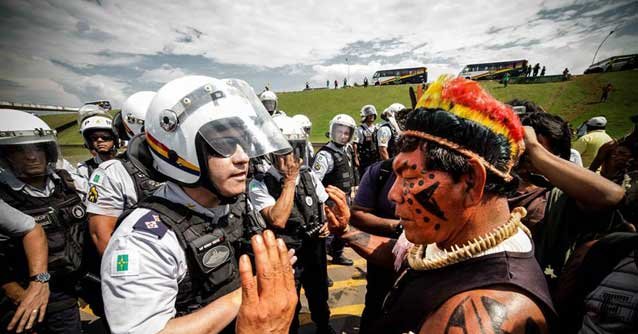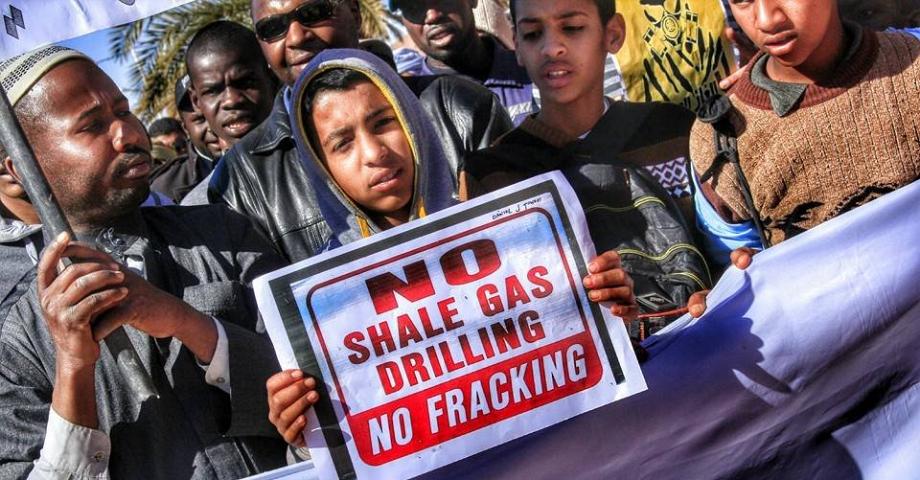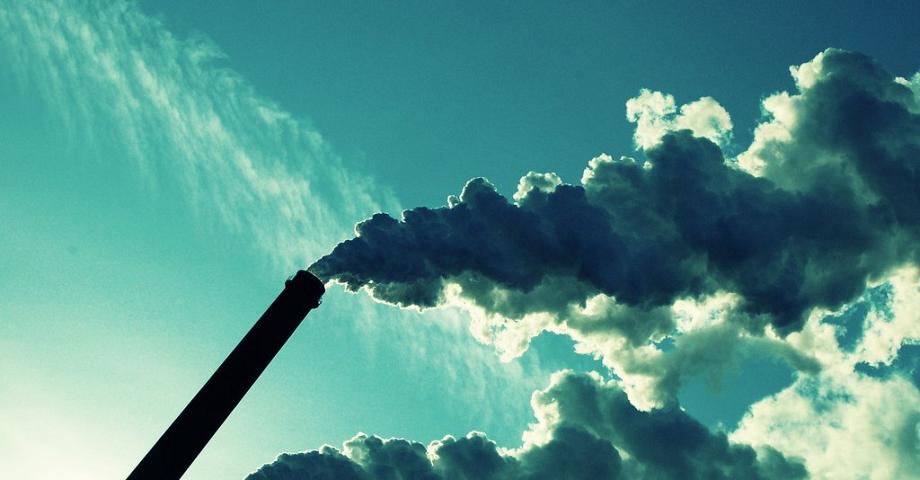The Tapajós Study Group (Grupo de Estudos Tapajós, or GET): it has an inoffensive name and appearance, which is hiding a far more questionable enterprise. A new generation of large dams is awaiting construction in the Amazon (after Belo Monte and others), in the still pristine basin of the Tapajós river and its tributaries, such as the Teles Pires river. At least four new large dams are planned in the region, which is home to a very rich yet little known biodiversity, and thousands of indigenous people. The GET, which groups together a diverse range of private firms under the authority of the public electricity company Eletrobras, is tasked with studying the region with a view of carrying out environmental impact studies for future dams.
Two French companies are GET members: sister rivals EDF and GDF Suez. The latter has recently constructed several new large dams in Brazil, including the Jirau dam [1]; the former would very much like to follow suit [2]. In the past, both have expressed interest in participating, beyond impact studies, in the construction and of the management of the projected dams in the Tapajós basin. EDF participated in the tendering process for the Sinop dam on the Teles Pires and, despite its failure, was recently in talks about buying back shares from the winning consortium. On the other hand, the company has chosen not to participate in bids for the São Manoel dam (still on the Teles Pires), which took place last December - incidentally neither did GDF Suez, which at one time showed an interest, but has seemingly deemed the risks too high. Questioned last December, EDF said that it was considering a possible application to build and operate the São Luiz do Tapajós dam, on the river of the same name - the tendering process is expected to take place in September 2014, as for the last planned dam, the Jatobá dam.
After the Jirau, Santo Antonio and Belo Monte dams, the Tapajós river seems poised to become from this point forward the new political and mediatic battlefront in the struggle between, on one side, the Brazilian government and its industrial allies, and on the other side, indigenous peoples and the international environmentalist movement. The dams’ promotors consider them a necessary sacrifice to ensure the country’s energy security, but critics retort that other options are available and that, as was the case of Belo Monte, the government’s hidden agenda is to facilitate the development of mines (particularly gold mines) in the region. Ultimately, no less than twelve dams could be built throughout the Tapajós basin.
A militarisation of environmental studies?
Some of the planned dams on the Tapajós river will have to be built on Munduruku territory. The Munduruku are one of the main Amazonian tribes, with about 13,000 members. They have already made it known that they are ready to oppose the contruction of the dams by force, if necessary. Even if, in theory, their villages will not be flooded, the Munduruku fear the consequences of modifying the river hydrology, the destruction of biodiversity, and the social impact of future building sites, in particular the influx of migrants that they will surely cause. One of their sacred sites, the Sete Quedas falls, has already been destroyed because of the development work on the river [3].
Several months ago, the Munduruku kidnapped three GET scientists – whom they blamed for not having consulted them in advance before undertaking their exploration studies. These experts have since been freed, but these events explain the reasoning behind the astonishing decree recently issued by the Brazilian government: a decree which grants the support of the national army to all studies carried out on the social or environmental impact of projects on indigenous land, and which strictly forbids local populations to demonstrate against this type of studies. Indigenous peoples have dubbed it "the decree of the repression". According to the Munduruku, since the decreee was passed, "the police and the armed forces are surrounding our villages. They think that they can intimidate us, but we will never be intimidated".
Locally, dam projects are not without supporters. Some hope that they will bring development. Journalists who have attended one of the "public hearings" destined to "consult" the populations about the São Manoel dam project describe it as "a PR exercise". Brazilian official prosecutors have challenged the rationale for these public hearings, on the grounds that local indigenous people should have been able to give their "free, prior and informed consent" beforehand. "By militarising the region strongly, the government has broken its dialogue with these populations and made it impossible to carry out a proper prior consultation”, said the Pará prosecutor, Felicio Pontes, to Al-Jazeera. Along with other prosecutors, he even succeeded in having a hearing temporarily cancelled. However, as often is the case with large dams in Brazil, this judicial decision was suspended through a legal disposition dating back from the dictatorship, which allows executive power to suspend the rule of the law when "national security" is at stake.
These developments show how, with regards to large dams, even carrying out impact studies can prove highly controversial. Impact studies are critical for the granting of administrative licences, and then for designing the social and environmental "compensation" programmes which the dams builders will be held to.
Critics say the work of GET experts aims, above all, to give the impression to local communities that the decision to build the dams is already taken. According to Brent Milikan, of the NGO International Rivers, the objective is to "intimidate and coopt local communities, creating the impression that the dams are a fait accompli and that they will be making lots of money from the projects". The GET website puts it plain and simple: it is all about "suppressing doubts" and "demystifying dams". Symbolic of the opacity of the whole process, GET scientists have been absolutely forbidden to talk to the press. The fact that businesses like EDF and GDF Suez (amongst others) are participating in the GET also constitutes a conflict of interests, since these same companies are interested in actually building the dams, and others elsewhere in Brazil.
A regression for indigenous rights?
The Munduruku have united with neighboring tribes and traditional allies in their struggle, and have the support of the country’s other indigenous populations. All are very angry about the large projects launched in the Amazon and in the rest of Brazil over the last few years, of which the Belo Monte mega dam is only the most visible face. In December 2013, 50 Munduruku warriors occupied an official building of the Brazilian goverment - the same one which houses the administration which has the power to decide to "suspend" judicial decisions in the name of national security.
For indigenous Brazilians, the decree adopted by the government of Dilma Rousseff, authorising the use of the army to carry out impact studies on the Tapajós, is part of a downward trend for the rights of the country’s indigenous peoples. The official registration process for indigenous lands, initiated by the 1988 Constitution, is at deadlock. Several legal projects or decrees have been introduced by the Chamber of deputies and/or by the government of Dilma Rousseff in order to restrict the legal rights of indigenous peoples on their own land and to regularise the situation of large agricultural exploitations. In this struggle between politicians and indigenous people in Brazil, EDF and GDF Suez have apparently chosen their side.
Olivier Petitjean
—
Photo : Amazon Watch




